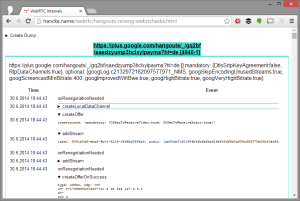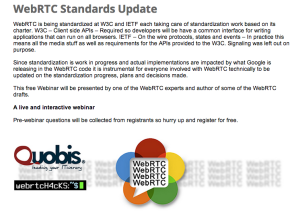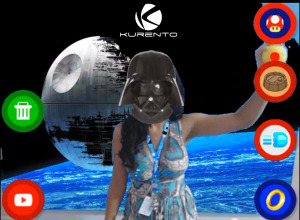As discussed in previous posts, WebRTC standards do not specify a signaling protocol. In general this decision is positive by giving developers the freedom to select (or invent) the protocol that best suits the particular WebRTC application’s needs. This can also reduce the time to market since standards compliance-related tasks are minimized. WebRTC media and […]
Search Results for: codec
How does Hangouts use WebRTC? webrtc-internals analysis
Update: Philipp continues to reverse engineer Hangouts using chrome://webrtc-internals. Please see the bottom section for new analysis he just put together in the past couple of days based on Chrome 38. As initiators and major drivers of WebRTC, Google was often given a hard time for not supporting WebRTC in its core collaboration product. This […]
WebRTC Standards Update Webinar
One of the first posts we published on this blog a year ago was a ‘A Hitchhiker’s Guide to WebRTC standardization‘. Since then, the work has certainly progressed and we have been sharing here a number of updates on the topic. This week we’re having qn IETF meeting in Canada and when it comes to […]
Kurento.org: WebRTC, Computer Vision, Augmented Reality, Awesome (Luis López Fernández)
Sending real time communications from point A to point B? That functionality is relatively easy with WebRTC. Processing the media in real time to do something cool with it? That is an area I find a lot more interesting, but it is a lot tougher to do. When I was building my Motion Detecting Baby Monitor project, […]
Plug-in free or free plug-in? Q&A with IE & Safari WebRTC plug-in maker Alex Gouaillard
One of the most vexing challenges for WebRTC developers is “what do you do with IE and Safari?” Do you ignore them? Tell your users to use something else? Can you even tell them what to do? Maybe you fall back to flash? There are no easy answers and WebRTC is supposed to be easy, […]






